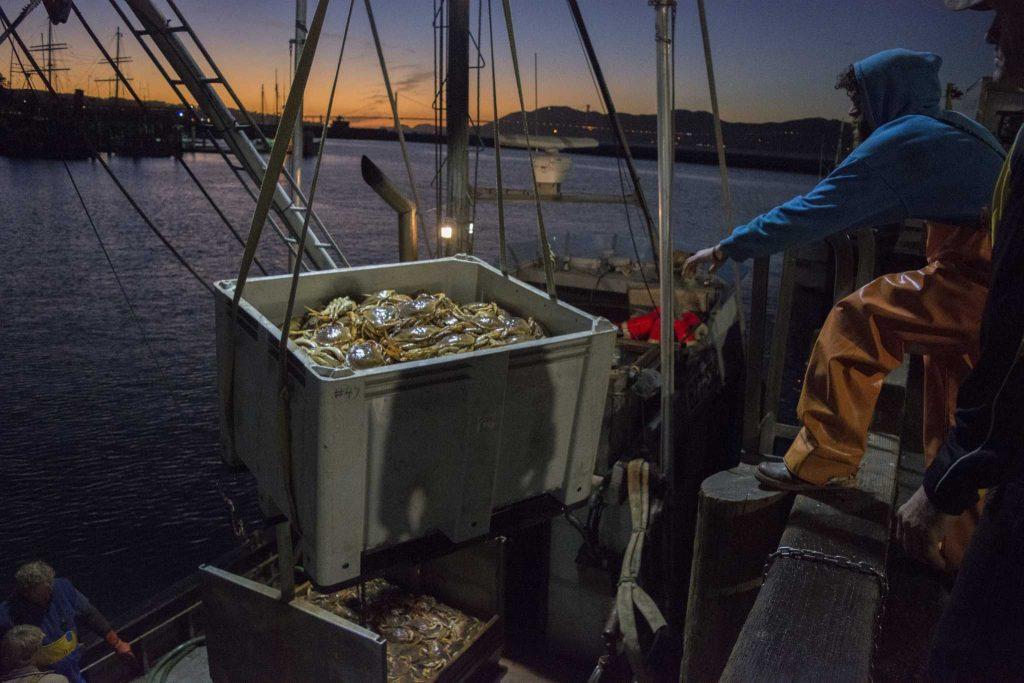Steaming bowls of cioppino are one of the dishes that may be graced with the return of crab to the kitchens of the student-run Vista Room this winter.
Crabbing season was shut down last year on the California coast due to a harmful algae that was being found in dungeness crabs.
“Last year the entire crab season in California was shut down, it was cut from Santa Barbara to Oregon,” said Tim Shaw, chef instructor of the Vista Room. “We had to use more Oregon bay pink shrimp and we also used calamari from Monterey, but there really is no alternative to dungeness crab. You could get Alaskan King crab, but you just can’t replace it (Dungeness crab) since it is local.”
Shaw said that last year’s crab season was so bad that the Vista Room is still substituting other types of shellfish and seafood in place of crab.
According to Shaw, the four-course restaurant will likely have to wait until the Spring semester to serve crab.
Johathon Stillman, a marine biology professor and faculty member at the Romberg Tiburon Center for marine research, explained that last year’s season had to be shut down because the crabs were ingesting a type of phytoplankton that creates an acid that is harmful to humans.
“The domoic acid is produced by diatoms (phytoplankton) during periods of intense bloom which happens when waters are warmer,” Stillman said. “So the link is, climate warming leads to more phytoplankton, which leads to more domoic acid. Filter feed animals like crabs eat the plankton and the acid from the plankton gets concentrated in the crab’s digestive tissue. Domoic acid affects important receptors for our brain and in our systemic functions and can cause dizziness, diarrhea, and if eaten in large amounts, paralysis.”
Yet, this season the weather pattern is shifting from El Nino to La Nina and the water will be cooler, so Stillman says it will be less likely for crabs to get the acid in their system.
“It is not as bad this year, the only area shut down now is from Pt. Reyes to Mendocino,” Shaw said.
According to Department of Fish and Wildlife, Nov. 5 was the official start to the recreational crab season, which is an earlier start than usual.
However, now the closure of certain fishing areas on the California coast looks even graver. The San Francisco Chronicle reported Wednesday that state officials would have to delay the opening of the crabbing season for a 120-mile stretch of the coastline.
According to the article, the Department of Fish and Wildlife delayed the opening of the season from Pt. Reyes to Humboldt Bay, until the area tests negative for the toxic domoic acid.
Stillman said that if the season is opened early in the San Francisco and Pacifica area, the crabs should be safe to eat. He stressed that it is still important for everyone to pay attention and take precautions when preparing and eating seafood.
“Make sure the muscle (meat) is washed before eaten, especially since the acid is a small molecule and is able to survive high temperatures, unlike bacterial diseases, so boiling it won’t have any affect on it,” Stillman said.
Shaw added that consumers should “only eat the meat inside the leg instead of the gills.”
Saundra Brown, a masters student in counseling said she is still slightly worried about the toxin since she is a seafood lover.
“I’m slightly worried about it (the toxic acid). It is a little scary and makes me cautious about where my seafood comes from,” Brown said.
According to Brown, she will just stick to other types of seafood such as steamed clams or scallops instead.
Shaw says that the Vista Room expects to start incorporating local crab in the menu for next semester.
“We’re considering next semester to make the crab cioppino,” Shaw said.
While this season looks like it will be a good season and unusually large crabs are already being caught at Pier 45 as reported by the San Francisco Chronicle, Stillman said that if the waters in the bay were to warm up again then the domoic acid could potentially be produced again, finding its way back into the crabs.
According to Stillman, the scenario isn’t very likely since the bay is typically much cooler this time if year.
Even if the domoic acid produced by phytoplankton does happen to come back, Shaw emphasized that it is rare for people to get sick since it takes a lot of crabs with domoic acid to make people ill.
“It is a rare risk and you only steam them a few at a time to be safer,” Shaw said. “Dogs got sick from it in the Russian River, but there were only a few incidents last year.”








